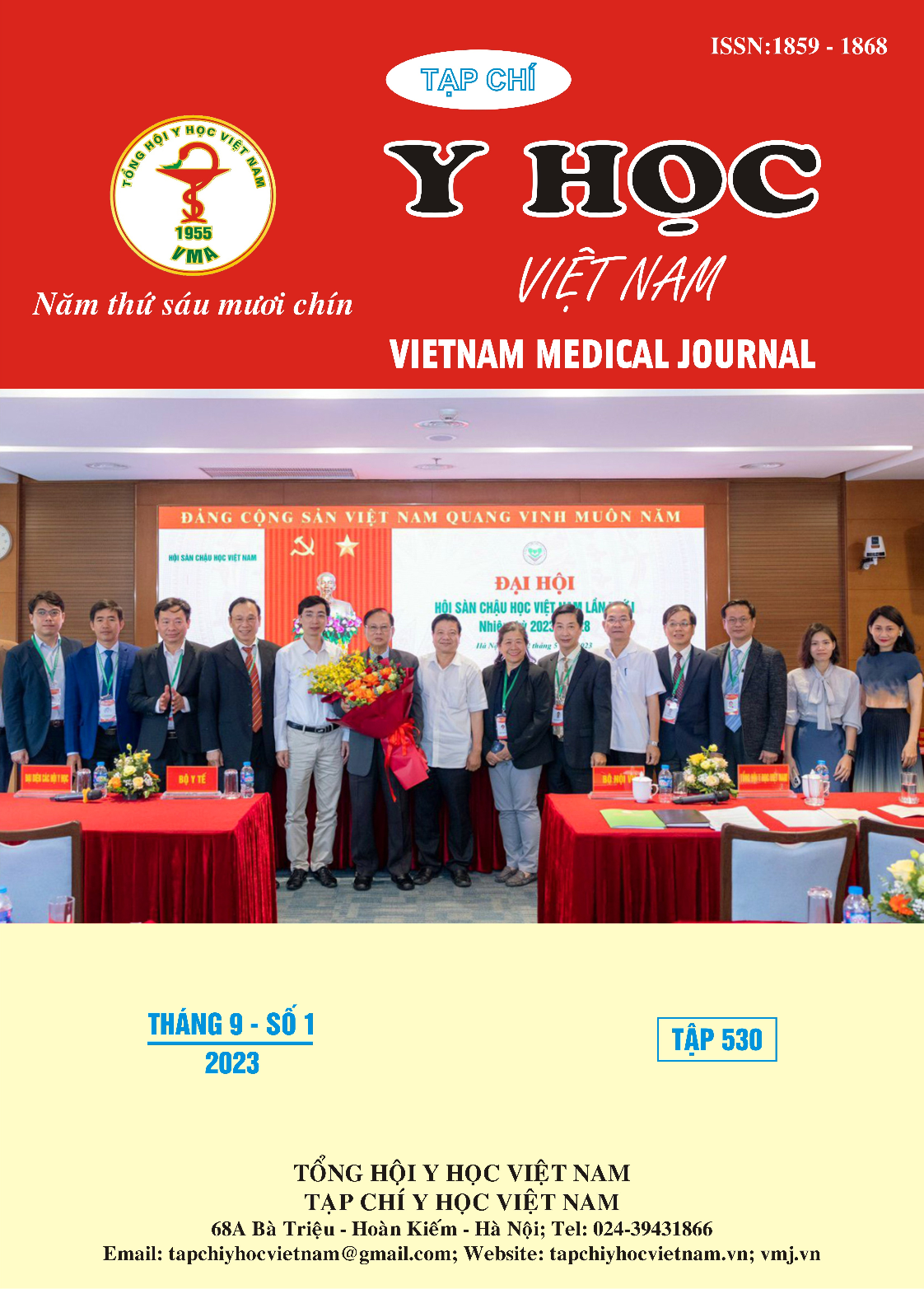ĐÁNH GIÁ TÍNH NHẠY CẢM KHÁNG SINH VÀ KẾT QUẢ ĐIỀU TRỊ NHIỄM KHUẨN BỆNH VIỆN DO KLEBSIELLA PNEUMONIAE TẠI KHOA HỒI SỨC TÍCH CỰC BỆNH VIỆN HỮU NGHỊ ĐA KHOA NGHỆ AN
Nội dung chính của bài viết
Tóm tắt
K.pneumoniae gây bệnh cảnh nhiễm khuẩn bệnh viện đa dạng và vấn đề kháng kháng sinh gia tăng trong vài thập kỷ qua đã là một vấn đề trên toàn thế giới. Mục tiêu: Đánh giá tính nhạy cảm kháng sinh và kết quả điều trị nhiễm khuẩn bệnh viện do Klebsiella pneumoniae tại khoa Hồi sức tích cực Bệnh viện Hữu nghị Đa khoa Nghệ An. Đối tượng và phương pháp nghiên cứu: Nghiên cứu mô tả cắt ngang 60 bệnh nhân được chẩn đoán nhiễm khuẩn bệnh viện do K.pneumoniae từ 01/2022 đến 08/2022. Kết quả: Tính nhạy cảm K.pneumoniae với nhóm fosfomycin là 62%; amikacin là 35%; carbapenem 20-30%; quinolon 10-12%. Tỷ lệ tử vong 26,67%; đáp ứng lâm sàng 56,7%; đáp ứng vi sinh 40%; kháng sinh kinh nghiệm phù hợp 61,7%. Kết luận: Tính nhạy cảm K.pneumoniae với nhóm fosfomycin cao nhất 62%; Tỷ lệ tử vong 26,67%; đáp ứng lâm sàng 56,7%; đáp ứng vi sinh 40%.
Chi tiết bài viết
Từ khóa
K.pneumoniae; nhiễm khuẩn bệnh viện; kháng kháng sinh
Tài liệu tham khảo
2. Hoai NTT, Giang NNT, An HV. Hospital-acquired infections in ageing Vietnamese population: current situation and solution. MedPharmRes. May 01, 2020; 4(2):1-8. doi:https://doi.org/10.32895/UMP.MPR.4.2.1
3. Dat VQ. Addressing the Burden of Antimicrobial Resistance in Vietnamese Hospitals. Oxford University Clinical Research Unit Vietnam. The Open University. December 2019;6(3):1-8. http://oro.open.ac.uk/70201/.
4. Vardakas KZ, Matthaiou DK, Falagas ME, Antypa E, Koteli A, Antoniadou E. Characteristics, risk factors and outcomes of carbapenem- resistant Klebsiella pneumoniae infections in the intensive care unit. The Journal of infection. Jun 2015;70(6):592-9.
5. Ranjbar R, Fatahian Kelishadrokhi A, Chehelgerdi M. Molecular characterization, serotypes and phenotypic and genotypic evaluation of antibiotic resistance of the Klebsiella pneumoniae strains isolated from different types of hospital-acquired infections. Infection and drug resistance. 2019; 12:603-611. doi: 10.2147/ IDR. S199639
6. Wang Z, Qin RR, Huang L, Sun LY. Risk Factors for Carbapenem- resistant Klebsiella pneumoniae Infection and Mortality of Klebsiella pneumoniae Infection. Chinese medical journal. Jan 5 2018; 131(1): 56-62. doi: 10.4103/ 0366-6999. 221267
7. Pranita D. Tamma, Aitken SL, Bonomo RA, Mathers AJ, Duin Dv, Clancy CJ. Infectious diseases society of america antimicrobial resistant treatment guidance: Gram-negative bacterial infections. IDSA 9/8/2020; 9(3):2- 38.doi: https://www.idsociety.org/ practice-guideline/ amr-guidance/
8. Najmeddin F, Shahrami B, Azadbakht S, et al. Evaluation of Epithelial Lining Fluid Concentration of Amikacin in Critically Ill Patients With Ventilator-Associated Pneumonia. Journal of intensive care medicine. Apr 2020;35(4):400-404. doi:10.1177/0885066618754784


